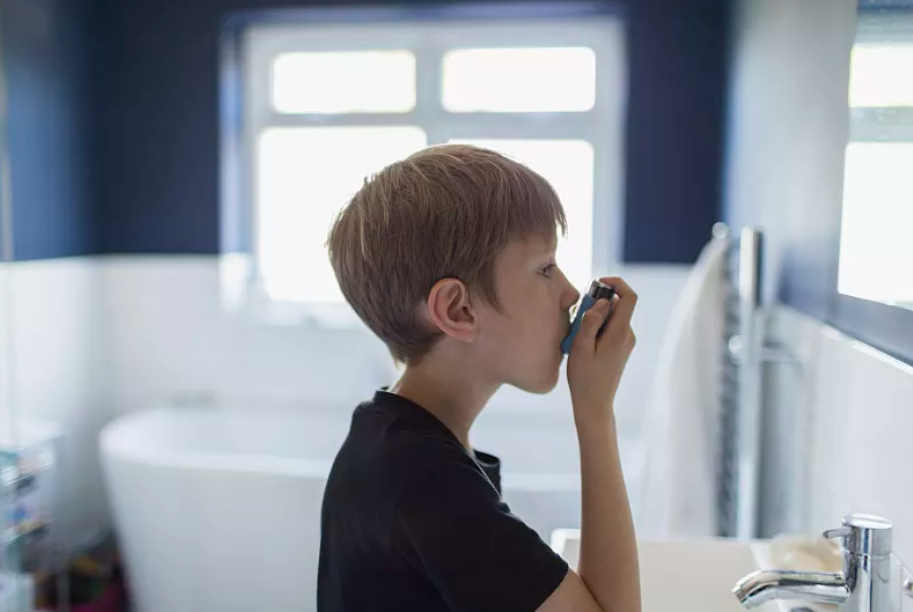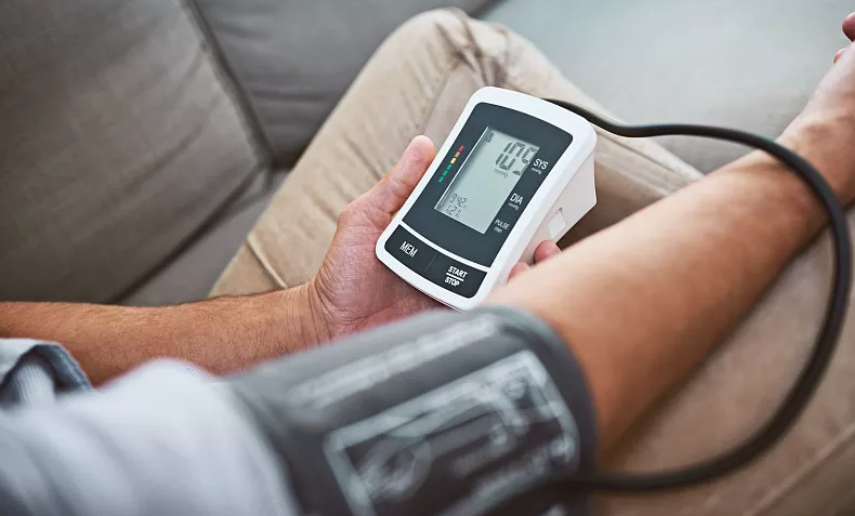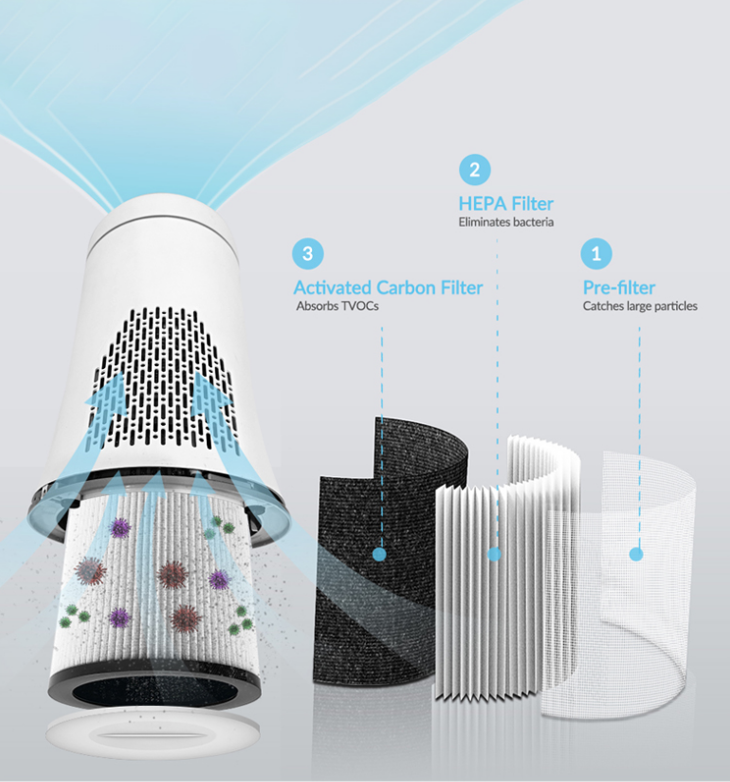Everyone is familiar with air pollution particles such as smog and PM2.5. After all, we have suffered from them for many years. However, particles such as smog and PM2.5 have always been considered to be only sources of outdoor air pollution. Everyone has a natural misunderstanding of them, thinking that as long as you go home and close the windows, you can isolate the pollution. As everyone knows, indoor air pollution is the real invisible killer.
Indoor air pollution is the one we most often come into contact with and has the longest exposure time. After reaching a certain level in the air, it will have adverse effects on the body and even cause diseases. More importantly, indoor air pollution is formed by the pollution generated indoors and the pollution entering the room from outside.
When the outdoor air AQI index is low, the outdoor has little effect on indoor air pollution, and opening windows for ventilation helps to dilute indoor pollutants. However, when the AQI index of outdoor air is high and the pollution is serious, such as smog weather, the indoor pollution will be double superimposed.
Common indoor pollution sources are mainly pollutants released with combustion behaviors such as smoking and cooking. The concentration is high and the number of times of release is high, and fine particles are also adsorbed by indoor curtains and sofas, resulting in longer-term pollution and slow release patterns. Like third-hand smoke.
Secondly, inferior furniture, brand new furniture or substandard, as well as volatile items such as indoor foam and plastic will volatilize harmful pollutants, such as formaldehyde! This kind of pungent smell can also make people wary, but colorless and odorless gaseous pollutants such as toluene are easy to take lightly.
In July 2022, the National Health Commission officially released the recommended standard “Indoor Air Quality Standard” (GB/T 18883-2022) (hereinafter referred to as the “Standard”), the first updated recommended standard in my country in the past 20 years.
The “Standard” added three indicators of indoor air fine particulate matter (PM2.5), trichloroethylene and tetrachloroethylene, and adjusted the limits of five indicators (nitrogen dioxide, formaldehyde, benzene, total bacteria, radon). For the newly added PM2.5, the standard value of the 24-hour average does not exceed 50µg/m³, and for the existing inhalable particulate matter (PM10), the standard value for the 24-hour average does not exceed 100µg/m³.
At present, the improvement of indoor air quality mainly focuses on the reduction or removal of particulate pollution. The removal goals of most air purifiers first point to particulate pollution. As more and more families and companies are familiar with the role of air purifiers, more and more people are willing to buy air purifiers to protect the health of their families and employees.
At the same time, some dissenting voices also followed. Some people think that air purifiers are just a new “IQ tax”, a concept that has been hyped and publicized, and cannot really improve and protect our health.
So are air purifiers really just “IQ taxes”?
The School of Public Health of Fudan University and the Shanghai Environmental Protection Industry Association explored the effects of air purifiers on health from the results of a published study on air purifiers and population health.
At present, the research on the health effects of indoor air purifiers or combined fresh air systems on population health mostly adopts the design mode of “intervention research”, that is, comparing the population before and after using air purifiers, or comparing the use of “real” air purifiers (with filtering Synchronized changes in air quality and population health effect indicators between the “fake” air purifier (with the filter module removed). The health effects that can be reflected and measured are related to the difference in the exposure concentration of the population changed by the intervention and the length of the intervention. Most of the existing studies are short-term interventions, and the health effects involved are mainly concentrated in the respiratory system and cardiovascular health effects, which are also the two health problems that are most directly affected by air pollution and have the heaviest disease burden. Let’s explore these two aspects together.
Indoor Air Quality Interventions and Respiratory Health
Exposure to indoor air pollutants increases the risk of respiratory-related diseases. On the contrary, using air purification equipment to reduce indoor pollutants can be observed to improve airway inflammation indicators and some lung function indicators. FeNO (exhaled nitric oxide) is one of the indicators reflecting the level of inflammation in the lower respiratory tract.
The experimental results show that when focusing on patients with existing respiratory diseases, indoor air quality intervention has a significant protective effect on the health of the respiratory system. For patients with allergic rhinitis, studies have shown that due to the intervention of air purifiers, the symptoms of rhinitis in patients with pollen allergy are significantly improved.
Related research results in South Korea also show that the use of HEPA (High Efficiency Air Filtration Module) air purifiers significantly reduces the need for medication in patients with allergic rhinitis.
For asthmatic patients, the incidence of early asthmatic reactions was significantly lower in patients using air purifiers; at the same time, air purifiers also prevented late asthmatic reactions.
It was also observed that during the period of air purifier use, the frequency of medication use in children with asthma was significantly reduced, and the number of days that asthmatics were free of symptoms increased significantly.
Indoor air quality interventions and cardiovascular health
Numerous studies have shown that exposure to ambient PM2.5 can significantly increase heart disease morbidity and mortality, in addition to exacerbating heart disease symptoms. Sometimes only a short-term exposure can lead to very serious consequences, such as lethal heart rhythms. Irregularities, myocardial infarction, heart failure, sudden cardiac arrest, etc.
Through the intervention of indoor air quality, such as the use of HEPA air purifiers, through the multi-layer structure, the pollutants are intercepted layer by layer, so as to achieve the effect of purifying the air. Using HEPA air purifiers can purify 81.7% of the particulate matter in the air when cooking indoors, greatly reducing the concentration of indoor particulate matter.
The results of short-term intervention of indoor air purifiers show that short-term air purification intervention may be beneficial to cardiovascular health. Although the significant effect of lowering blood pressure in the short term is not obvious, it has obvious benefits on the regulation of cardiac autonomic function (heart rate variability). In addition, it also has obvious reduction and improvement effects on inflammatory factor biological indicators in human peripheral blood, coagulation of cardiovascular system, oxidative damage factors and other indicators, and has obvious effects in a short period of time. PM2.5 study subjects had higher levels of blood pressure and peripheral blood inflammatory markers, and air purifier intervention resulted in a significant decrease in indoor PM2.5 concentrations.
In some long-term indoor air quality intervention trials, some studies have observed that long-term use of air purifiers for intervention can significantly reduce the blood pressure of subjects and play a role in lowering blood pressure.
In general, based on the published studies, most of the intervention studies used a randomized double-blind (crossover) controlled study design, the evidence level is high, and the research sites are for typical civil buildings including houses, schools, hospitals and public places Wait. Most of the studies used indoor air purifiers as intervention methods (both domestic and foreign brands), and some used intervention measures in which indoor fresh air systems and purification devices were turned on at the same time. The air purification involved was high-efficiency particulate removal and purification (HEPA). At the same time, it also has research and application of negative ion air purifier, activated carbon, electrostatic dust collection and other technologies. The duration of research on population health varies. If the monitoring of indoor air quality is simple, the intervention time usually ranges from 1 week to 1 year. If the monitoring of environmental quality and health effects is carried out at the same time, it is usually a short-term study with a large scale. Most are within 4 weeks.
While improving indoor air quality, indoor air purification can also improve the concentration, school efficiency, and sleep quality of students or people.
Effective indoor air quality interventions can effectively reduce indoor gas pollution, thereby protecting our health. Especially when the time at home is getting longer, air purifiers can escort to reduce indoor air pollution, purify indoor air, and protect physical health.
The use of air purifiers will become one of our effective means to prevent diseases and improve heart and lung function, rather than what some people call “pseudoscience” and “IQ tax”. Of course, after the air purifier has been used for a certain period of time, the filter should be replaced regularly, cleaning and maintenance should be carried out, and attention should be paid to avoid the occurrence of undesirable by-products.
Post time: Oct-25-2022








